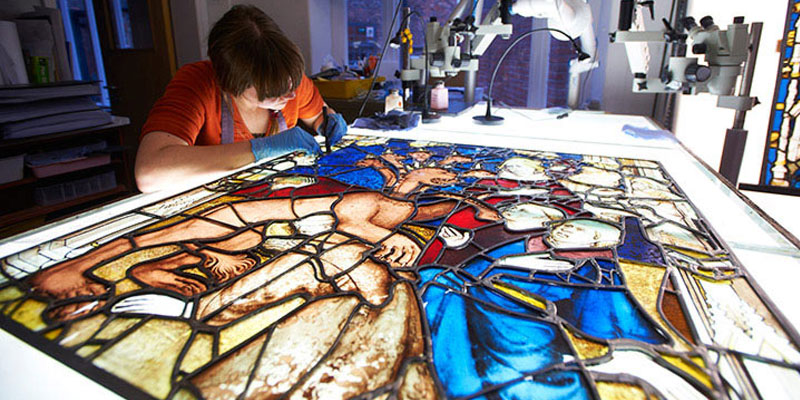The issue
Designed by John Thornton of Coventry between 1405-8, the Great East Window of York Minster stands at 78 feet tall. At about the size of a tennis court, the 311-panelled window is the largest expanse of medieval stained glass in Britain and regarded as one of the great pre-Renaissance treasures of European art.
Yet six centuries of wear and tear had taken their toll on this major tourist attraction and source of income for the city of York. Work was urgently needed to ensure the preservation and enjoyment of this stained glass for centuries to come.
The research
The continued conservation work at York Minster is underpinned by the world-leading position in stained glass research of the Department of History of Art at York.
This departmental specialisation is expressed in the research generated in the Stained Glass Studies research cluster, the MA in Stained Glass Conservation and Heritage Management, and the British Corpus Vitrearum project - a British Academy research project located at York which aims to provide an online survey of the nation’s stained glass.
Sarah Brown is a leading authority on the architectural history and stained glass of the choir of York Minster. Her work explores the East Window within its architectural setting, and informs an understanding of its patronage, history and meaning.
An independent research project has also explored the chemical composition of the East Window’s glass. A three-year Leverhulme Trust funded research collaboration between York's Professor Tim Ayers and Professor Ian Freestone (then University of Cardiff) undertook innovative compositional trace-element analysis of the glass, providing insights into the history of the window and the working practices of its maker.
This has allowed the identification of batches of materials as they were used within the window, assisting in the planning of panel-by-panel conservation, and providing a corroborative method for identifying intruded materials.
The outcome
The most important impact of our work on the Great East Window has been the protection and preservation of one of the largest and most significant works of medieval art in Britain, for York Minster, the city of York and the broad public concerned with Britain’s heritage.
By enhancing the tourist experience at York Minster, York’s principal tourist attraction, our work has made a major contribution to the economy of an important English city. The success of this project is transforming conservation practice nationally and beyond the UK.


